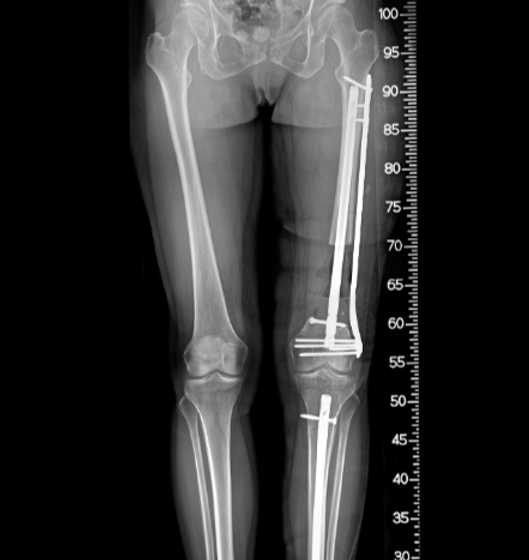Mr Alastair Robertson FRCS
SUSSEX LIMB RECONSTRUCTION
BONE DEFECTS

What is a bone defect?
-
A bone defect is when part of bone is lost, typically from trauma or infecton
What are the types of bone defect?
-
Partial - a bone defect where there is a portion of bone missing but there is still some contact between the remaining bone ends
-
Segmental - a bone defect where there is a portion of bone missing but there is no contact between the the remaining bone ends
Are all partial bone defects the same?
-
Partial bone defects can be considered critical or non-critical
-
Critical - the remaining bone when healed support the function of the limb, even with the piece of bone missing
What are the techniques for managing bone defects
-
Grafting - synthetic materials or patients bone bone from elsewhere in the body - typically used for non-critical partial bone defects
-
Masquelet - the induced membrane technique - a two step surgical procedure:
-
Creating a membrane around a cement spacer (induced membrane)
-
At a later date using that membrane to promote bone growth when the spacer is replaced with a bone graft.
-
-
Bone transport - distraction osteogenesis - a piece of bone from the affected bone is moved up or down to replace the missing piece, whilst new bone grows to replace where it came from
-
Shortening with lengthening
-
Bringing two pieces of bone together to eliminate the defect and lengthening the same limb elsewhere to ensure it stays and equal length
-